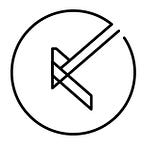IMS: Intra-muscular Stimulation
Dry Needling
By: Matt Mohler | Physiotherapist | IG @mattmohler.physio
You may have heard of “IMS” or “dry needling” before from friends, co-workers, or your health care practitioner (or maybe even had it done on yourself!), but what exactly does it do?
Dry needling has gained popularity in recent years, particularly being used often in physiotherapy and chiropractic clinics for aches and pains. Despite its growing expansion in the healthcare field, many people still have questions about what exactly it is. So let’s dive into it!!
What is IMS?
Intramuscular Stimulation (IMS) is a form of dry needling therapy used to treat various muscle and joint conditions. This therapy involves inserting fine, thin needles into the muscles to release tension, reduce pain, and improve function. Techniques will slightly vary from clinician to clinician, but typically the needle is inserted and then moved up and down within the muscle for a short period before being removed.
IMS is commonly used to treat conditions such as chronic pain, sports injuries, and headaches. The therapy works by targeting trigger points, which are tight knots of muscle fibers that can cause pain and discomfort. By inserting the needles into these trigger points, the manual therapist can release the tension and restore normal muscle function.
Effects of Dry Needling
- Decreased pain
- Improved range of motion
- Relaxation of tight muscles and trigger points
- Improved local blood circulation
- Improved function and recovery
One of the key benefits of IMS is that it is a non-invasive, drug-free alternative to traditional pain management techniques. Unlike surgical procedures or prescription medications, IMS has few side effects and is a safe option for most people. Additionally, IMS is typically a quick and effective form of treatment, with many patients experiencing relief after just a few sessions.
Common Conditions Treated with Dry Needling
1. Upper Back and Neck Pain
Given the amount of time we typically spend sitting in front of work computers or cell phones, it’s no surprise that postural-related neck and upper back pain is one of the most common issues we see! Treating the muscles of the upper back and neck, the very muscles that can cause headaches, can help alleviate tension in this area. This region is also where we experience some of the most successful dry needling treatments!
2. Lower Back Pain
Similarly to postural neck pain, low back pain is a very common condition throughout all populations and demographics. It’s very common for dry needling to be part of our treatment plan depending on your specific issues and needs!
3. Golfer’s/Tennis Elbow
Also known as medial or lateral epicondylitis, these tendinopathy injuries are usually caused by overuse of your forearm muscles due to repetitive motions like gripping, typing, writing, and manual labour.
4. Knee Pain
Some knee injuries can be directly or indirectly caused by quad or hamstring tightness, making dry needling a potential treatment option.
5. Calf Tightness/Achilles Tendonopathy
These issues are very common in running and jumping athletes, and dry needling can be a tool to help relieve that tension!
IMS is generally well-tolerated, and most patients experience only minor discomfort during the procedure. After the therapy session, patients may experience some mild soreness, similar to the feeling after a workout. This is a normal part of the healing process, and should subside within a few days. Dry needling should only be used as an adjunct to your active rehabilitation, rather than a substitute. Nothing will replace taking an active approach to your recovery, but dry needling is an effective technique to complement the rest of your treatment plan!
If you have any questions about dry needling or its role in rehabilitation, feel free to reach out to the team at Kinetic Living and we will be happy to help!
